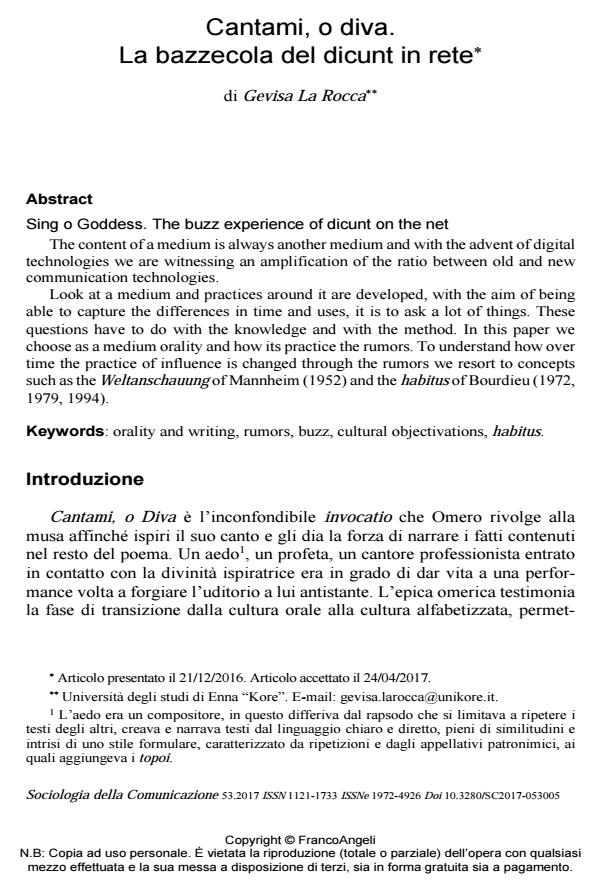Cantami, o diva. La bazzecola del dicunt in rete
Titolo Rivista SOCIOLOGIA DELLA COMUNICAZIONE
Autori/Curatori Gevisa La Rocca
Anno di pubblicazione 2017 Fascicolo 2017/53
Lingua Italiano Numero pagine 19 P. 56-74 Dimensione file 222 KB
DOI 10.3280/SC2017-053005
Il DOI è il codice a barre della proprietà intellettuale: per saperne di più
clicca qui
Qui sotto puoi vedere in anteprima la prima pagina di questo articolo.
Se questo articolo ti interessa, lo puoi acquistare (e scaricare in formato pdf) seguendo le facili indicazioni per acquistare il download credit. Acquista Download Credits per scaricare questo Articolo in formato PDF

FrancoAngeli è membro della Publishers International Linking Association, Inc (PILA)associazione indipendente e non profit per facilitare (attraverso i servizi tecnologici implementati da CrossRef.org) l’accesso degli studiosi ai contenuti digitali nelle pubblicazioni professionali e scientifiche
The content of a medium is always another medium and with the advent of digital technologies we are witnessing an amplification of the ratio between old and new communication technologies. Look at a medium and practices around it are developed, with the aim of being able to capture the differences in time and uses, it is to ask a lot of things. These questions have to do with the knowledge and with the method. In this paper we choose as a medium orality and how its practice the rumors. To understand how over time the practice of influence is changed through the rumors we resort to concepts such as the Weltanschauung of Mannheim (1952) and the habitus of Bourdieu (1972, 1979, 1994).
Il contenuto di un medium è sempre un altro medium e con l’avvento delle tecnologie digitali si assiste a un’amplificazione del rapporto di compenetrazione tra vecchie e nuove tecnologie della comunicazione. Guardare a un medium e alle pratiche che intorno a esso si sviluppano con l’obiettivo di riuscire a cogliere le differenze rispetto al tempo e agli usi pone diversi quesiti, che hanno a che fare con la conoscenza e con il metodo. In questo lavoro si sceglie come medium l’oralità e si individua la sua pratica nei rumors. Per capire come nel corso del tempo si sia modificata la pratica di diffusione ed esercizio di influenza attraverso i rumors si ricorre a concetti quali la Weltanschauung di Mannheim (1952) e l’habitus di Bourdieu (1972, 1979, 1994).
Parole chiave:Orality and writing, rumors, buzz, cultural objectivations, habitus.
Gevisa La Rocca, Cantami, o diva. La bazzecola del dicunt in rete in "SOCIOLOGIA DELLA COMUNICAZIONE " 53/2017, pp 56-74, DOI: 10.3280/SC2017-053005